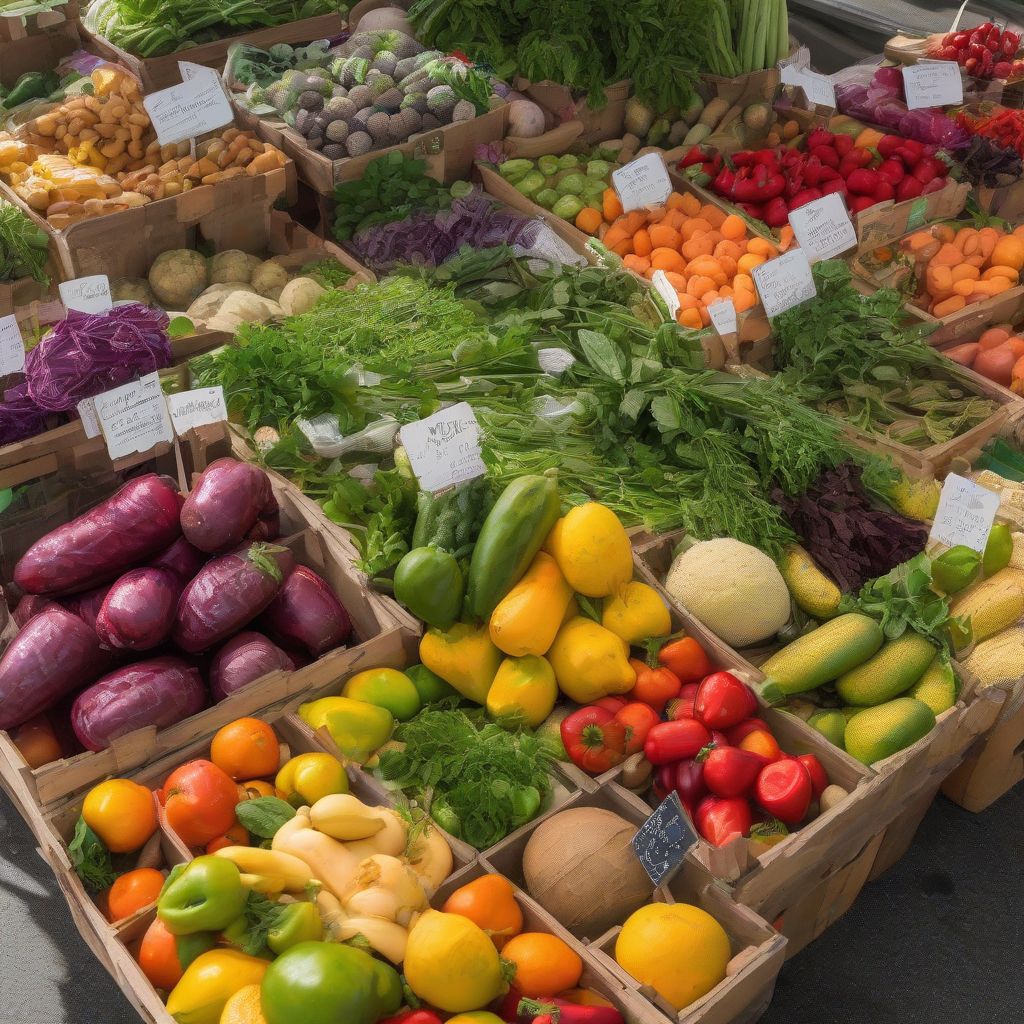Have you ever noticed how a seemingly simple dish can taste drastically different depending on where in the world you are? That’s the magic of local ingredients! From the sun-drenched tomatoes of Italy to the fiery chilies of Mexico, locally sourced ingredients are the heart and soul of traditional cuisine, telling stories of unique climates, cultures, and culinary ingenuity. Let’s embark on a global culinary journey to explore how these ingredients shape the dishes we know and love.
The Power of Place: Terroir and Tradition
The concept of “terroir” beautifully captures the essence of how a specific environment influences the flavor of ingredients. It encompasses everything from soil composition and climate to local farming practices. Think of the rich, buttery flavor of French cheeses, a direct result of the lush pastures where the cows graze. Or consider the distinct sweetness of Vidalia onions, grown in the unique soil of Georgia. These ingredients, nurtured by their specific terroir, become the building blocks of authentic, traditional dishes.
Climate’s Culinary Influence
Climate plays a pivotal role in shaping local ingredients. In warmer regions, abundant sunshine allows for the cultivation of vibrant fruits and vegetables like mangoes, citrus fruits, and peppers, often finding their way into zesty salsas, refreshing salads, and flavorful curries. Conversely, colder climates favor root vegetables like potatoes, carrots, and beets, which become the base of hearty stews, comforting soups, and warming casseroles. The availability of these ingredients dictates the culinary traditions that evolve over time.
 Local Ingredients
Local Ingredients
Cultural Connections and Culinary Heritage
Food is more than just sustenance; it’s an expression of culture. Traditional dishes often reflect the history, values, and beliefs of a community. For example, in many Asian cultures, rice is a staple, symbolizing prosperity and abundance. It’s incorporated into countless dishes, from sushi in Japan to biryani in India. Similarly, corn, a sacred crop for many indigenous peoples of the Americas, features prominently in dishes like tamales in Mexico and arepas in Colombia. These culinary traditions are passed down through generations, preserving cultural heritage and celebrating the unique flavors of a region.
Examples of Locally-Sourced Dishes Around the World
Let’s explore some specific examples of how local ingredients define traditional cuisine:
The Mediterranean Diet: Olive Oil and Sunshine
The Mediterranean diet is renowned for its health benefits and vibrant flavors. Olive oil, the cornerstone of this cuisine, is produced from olives grown throughout the region, lending its distinct flavor to everything from salads and dips to grilled meats and vegetables. The abundance of fresh produce, like tomatoes, cucumbers, and herbs, reflects the region’s sunny climate, creating a cuisine that is both flavorful and nutritious.
Spicy Southeast Asia: Chilies and Coconut Milk
Southeast Asian cuisine is an explosion of flavors, often characterized by the use of chilies, ginger, galangal, and lemongrass. The warm, humid climate is ideal for growing these aromatic ingredients, which form the base of many curries, stir-fries, and soups. Coconut milk, another staple ingredient, adds richness and creaminess to dishes, reflecting the region’s tropical landscape.
Hearty Scandinavian Fare: Root Vegetables and Fish
The colder climate of Scandinavia dictates a different culinary approach. Root vegetables like potatoes, beets, and turnips are plentiful and form the base of many traditional dishes. The long coastline provides access to an abundance of fish, which is often smoked, pickled, or cured, reflecting the need for preservation in the colder months. Dishes like gravlax (cured salmon) and pickled herring are classic examples of how local ingredients shape Scandinavian cuisine.
From Farm to Table: The Growing Importance of Local Sourcing
The farm-to-table movement has gained significant momentum in recent years, emphasizing the importance of using locally sourced ingredients. This approach not only supports local farmers and reduces environmental impact but also enhances the flavor and freshness of dishes. By choosing ingredients grown close to home, chefs and home cooks alike can reconnect with the seasons and celebrate the unique flavors of their region.
Conclusion
From the fragrant spices of India to the fresh seafood of Japan, local ingredients are the essence of traditional dishes worldwide. They reflect the unique terroir of a region, the ingenuity of its people, and the rich tapestry of culinary traditions passed down through generations. By embracing the power of local ingredients, we can not only savor authentic flavors but also connect with the cultural heritage and natural bounty of different corners of the world. What are some of your favorite dishes that showcase the magic of local ingredients? Share your thoughts and experiences in the comments below!



